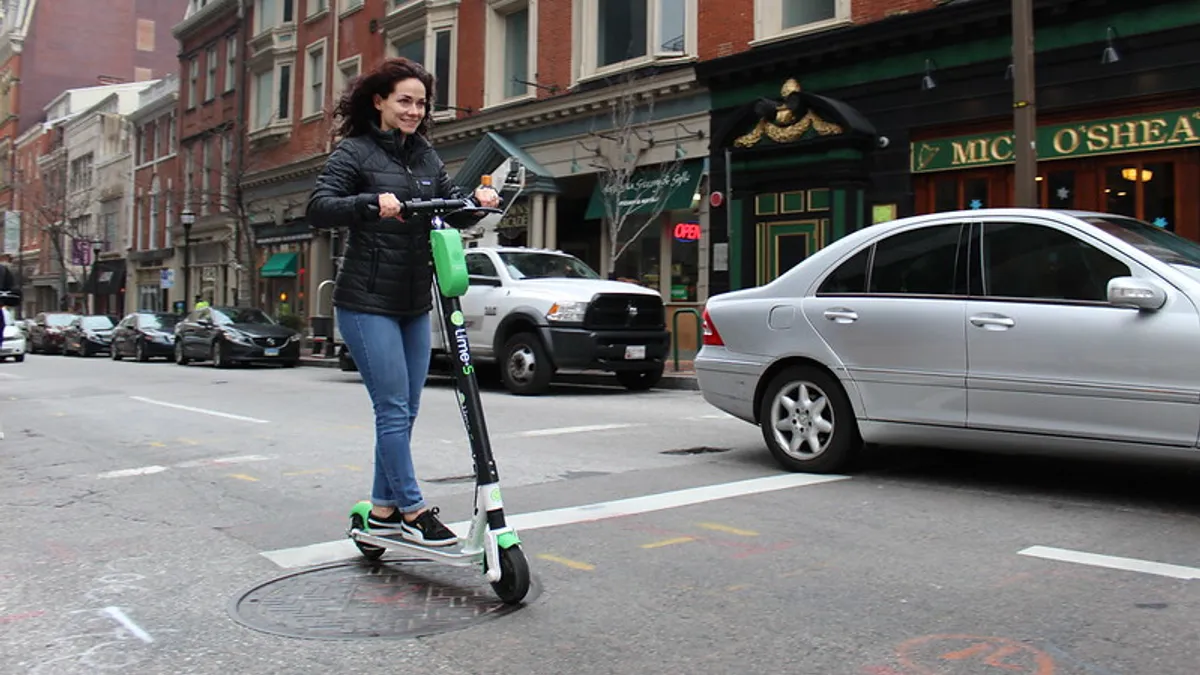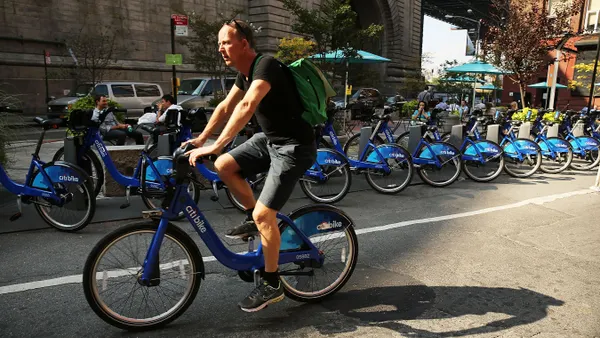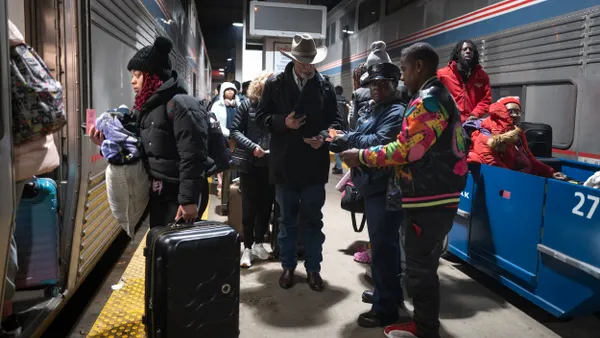Dive Brief:
- The North American shared micromobility industry saw 157 million trips from 194,000 vehicles in 2019, according to a first-of-its-kind report developed this fall by the North American Bikeshare Association (NABSA). Sam Herr, executive director of NABSA, joined partners from Toole Design and UC Berkeley's Transportation Sustainability Research Center (TSRC) in a webinar last week to share details of the report.
- The webinar highlighted several findings, including 30 million hours of physical activity gained by riders in 2019 and 65 million pounds of carbon dioxide offset that year through the use of micromobility. NABSA distributed these findings, along with a letter, to the Biden-Harris transition team in an effort to advocate for industry support.
- The report's data was collected through operator and agency surveys; existing research and literature; and one-on-one interviews with micromobility leaders, said Adrian Witte, micromobility practice lead at Toole Design. Witte said UC Berkeley TSRC was a "really important partner in providing an independent layer between the raw data from the operators and the aggregated results."
Dive Insight:
The assessment is the first of its kind in North America to show aggregated metrics of the micromobility industry at-large, according to NABSA. The report points to 264 cities in the U.S., 17 in Mexico and 11 in Canada that had at least one bike-share or e-scooter system in 2019.
"Before this, there was really a gap in this kind of data about the industry, and filling this gap was a need that was made particularly prominent to us by a member priorities poll that we conducted in early 2019," said Herr. She went on to say this report can now serve as a "baseline to track future trends and success in the industry."
Yet, collecting the data required to complete such an expansive report presented its own obstacles, experts said. The surveys brought in a decent sample of operator and agency respondents — 21 and 57, respectively — though "bringing those surveys together to generate a synthesis aggregation of the industry presented its own challenges," said Elliot Martin, research and development engineer with UC Berkeley TSRC.
He went on to explain the operator survey was key in offering a "solid industry-level perspective" of micromobility while the agency survey played a critical role in "providing a big picture at a regional level."
City leaders and agencies have used surveys as a key tool in gauging public needs and interests while preparing for the economic resurgence of urban environments post-COVID. The partners involved in this NABSA report said they discussed how to ask strategic questions in each survey to collect meaningful information in a consistent manner.
"Obviously the system is not perfect," Witte said, noting the researchers will do their best to fill in gaps whenever possible in the future.
NABSA teased that a 2020 state of the industry report is underway, which will address new micromobility systems that have come online as well as those that have shuttered or consolidated. "We've had a really unique year with the COVID-19 pandemic and we've seen a lot of resiliency from the shared micromobility industry," said Herr, noting the 2020 report will focus largely on the impacts of COVID-19.
That report, slated for release in summer 2021, will also expand its environmental impact analysis to incorporate operational emissions, Herr said. The public is increasingly considering emissions when selecting transportation methods, as suggested by a recent Transportation & Climate Initiative poll that found 76% of respondents factor "impact on the environment" into their transportation choices.











